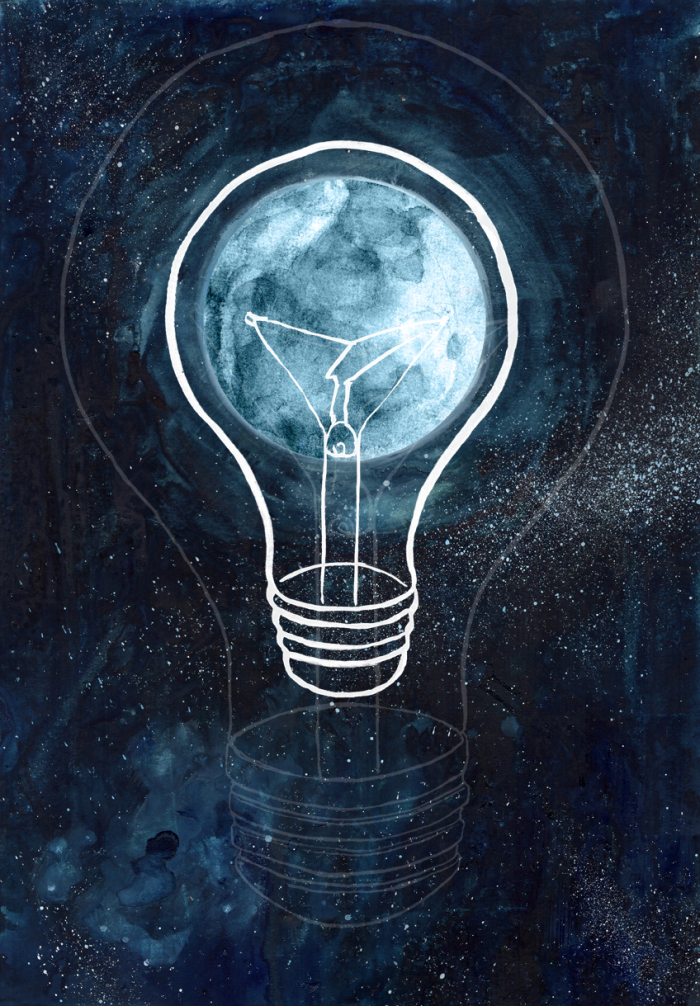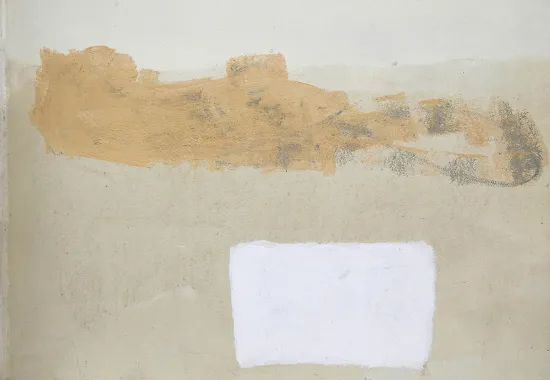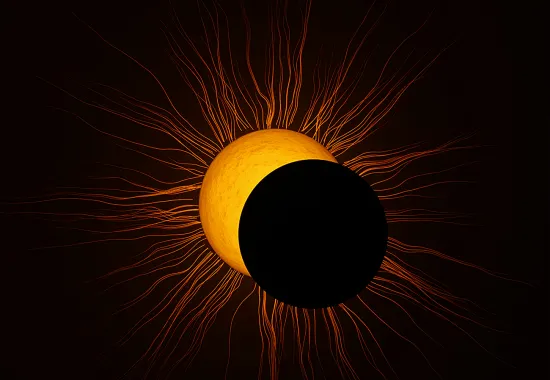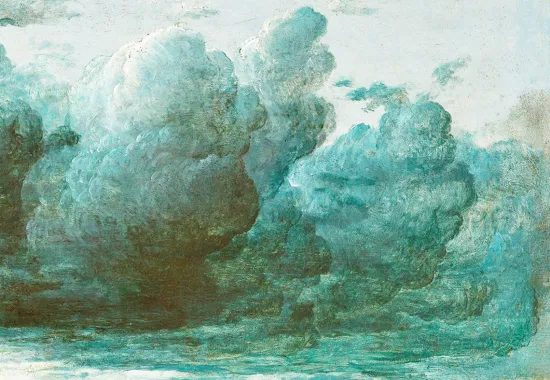On "Wake: World, Arrived"

WAKE: WORLD, ARRIVED
Reality, divided into light and matter.
A moment travels from the universe’s birth.
A massless noun converts into light, then reverses.
This, the moment when the universe begins
to shine. Mother’s voice whispering by the crib,
brushing with my first series of particulars.
A probability turns true, tips and flashes
slicing the light into particles it daringly
hails through. Father, teaching me to count.
Cosmic microwave background sharpens
to oldest light. Coldest light, barely enough
to move a thermometer above absolute
zero, whose space stretched as it traveled,
whose waves grew longer. And space,
hijacking the afterglow. I spend hours,
13 billion years, floating around like this—
stretched, faint, and quiet. You nod,
a kind of blessed observance. I, a high-flying
balloon, raining into space as matter unties itself
into that moment, searing its refrain on our tiny maps.
With so many demands on my attention, and so many years gone by now, it’s easy to forget what drew me to physics in the first place—before four years of college classes where the most exotic topics were always beyond the scope of my training. It’s not so much forgetting as a kind of receding—like light or space itself as my personal universe expands. I tend to some land now, and my focus is often the cosmos revealed in the dirt as much as the stars. But something always brings me back to physics. Two years ago I was skimming an issue of symmetry, a physics publication, when I found a piece by Lori Ann White called “The Oldest Light in the Universe.”
That oldest light? The Cosmic Microwave Background. Back when the universe was hot and dense, but without form, free electrons were rounded up in the gas cloud that was everything, releasing photons. As White says, “The universe began to shine.” And as it expanded, these photons stretched along with space, for a period of over thirteen billion years, all the while the waves growing “billions of times longer and cooler and quieter.” What especially captivated me was the idea that early light was still hanging around, even if dim. Cosmology is a search for clues, a game of inference. But that the very light and space (as a flexible medium, not a void) from The Beginning was still here in some recognizable form—that’s what moves so many of us to the god metaphor. The face of God, the mind of God—I may not have explicitly used the language in this particular poem, but I never fully avoid it, either. That presence, however subtle, is what makes physics so compelling.
Ripples in the fabric of space-time—gravitational waves—caused by the pre-inflationary universe interacted with these stretching photons, twisting them into polarization patterns that can be seen now in a fingerprint pattern (God’s fingerprint?). Whenever the physical world can be so stripped down as to reveal an ultimate (smallest, largest, oldest, even coldest), we see ourselves as figures in the entire scheme. Thomas Hardy’s 1882 description of looking through a telescope still resonates in this era of more advanced cosmological observation: “At night. . .there is nothing to moderate the blow which the infinitely great, the stellar universe, strikes down upon the infinitely little, the mind of the beholder. . .” His characters, looking at the night sky magnified, felt “oppressed with the presence of a vastness they could not cope with even as an idea. . .” Awe and terror become one, and it is good.
Jessica Reed’s poetry and non-fiction has appeared or is forthcoming in North American Review, Bellingham Review, Conjunctions, Waxwing, 111O, Tinderbox Poetry Journal, Spiral Orb, The Fourth River, Isotope: A Journal of Literary Nature and Science Writing, and elsewhere. She has a MFA in Poetry and a BS in physics, both from Purdue University. She has taught creative writing at Scottsdale Community College in Arizona, and for the Johns Hopkins Center for Talented Youth, where she designed and taught special writing topics, such as “Writing Workshop: Where Art Meets Science”. She teaches science-themed poetry at an all-female STEM summer program in Dammam, Saudi Arabia. She currently teaches creative writing at Ivy Tech Community College, and will teach a freshman seminar at Butler University on Physics and the Arts in 2016-2017.
Illustration by Justin Perkins. Justin Perkins graduated from College for Creative Studies. A freelance illustrator and designer, he teaches art in Detriot. Justin’s first illustration for the North American Review appeared in issue 298.4.
Recommended
Mercy
Eclipsing
Psychic Numbing





